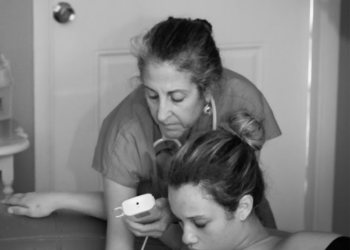After the invention of x-rays and thermography in the late 1800s, doctors began using this new image technology to identify cancerous tissue in breasts. However, it wasn’t until the late 1960’s that modern mammograms were developed as a form of breast cancer screening. These advances in the medical world have made it significantly easier to detect cancer in its earlier stages. The question arises though, could there be a way to detect potential cancerous tissue even before it develops? The answer is yes.
Types of Breast Screenings
While mammograms are currently the most common screening method for breast cancer, this doesn’t mean that it is the best or most effective choice. In fact, there are many different types of breast scans that can detect abnormalities. The problem is that many women lack the knowledge about the different options that are available to them when it comes to their healthcare.
Ultrasound Screening
Ultrasounds are a diagnostic imaging technique that creates an image of internal body structures. While most people think of babies when they hear the word ‘ultrasound’, they are used to detect and diagnose a variety of things in the body. They can even see tumors and cysts, making them a commonly used diagnostic for further examining breasts. However, ultrasounds are not able to detect early signs of breast cancer, making them unreliable for routine breast screenings.
Mammogram Scans
Mammograms have become the industry standard for breast exams. They use radiation to produce an x-ray photo of the breast to detect early signs of cancer. A mammogram is performed by placing the breast on a plastic plate with another plate pressed down the breast. Unfortunately, this procedure can be very uncomfortable, some women even find it painful. These x-ray photos are able to detect potentially cancerous masses before they are able to be felt during a physical exam.
Thermography Screening
Thermography uses an infrared camera to detect heat patterns in your body tissue. Digital infrared thermal imaging (DITI) sees temperature differences in the breasts to look for signs of breast cancer. Studies have shown that thermography can detect abnormalities up to 8-10 years before a mammogram would be able to detect a mass. *Midwife360’s Preferred Method*
MRI
MRI (magnetic resonance imaging) uses a magnet and radio waves to examine organs and structures within your body. The use of an MRI comes into play once a mass is detected in another form of testing. MRI is not a method of routine diagnostic testing for breast health. This is because they cannot detect microcalcifications, an early indicator of breast cancer.
Why We Prefer Thermography
Thermography is the best option overall for both the health of the patient and for catching potential changes in the body early on without unnecessary exposure to radiation. Thermography examines the physiology of the body, all the way down to the cellular level. It also does not use any radiation as opposed to a mammogram.
Thermography detects the heat patterns in our bodies and is best for non-invasive testing. We believe that everyone male, or female, should receive a thermography scan every 5 years to compare the composure of your physiology and detect potential problematic changes.
When Not To Use Thermography
If you have a detected problem it’s best to use invasive testing to determine the pathology of the problem. For example if you have a known lump the exposure to radiation is worth detecting with a mammogram or MRI to get a better picture of what exactly is happening inside your body.
Thermography in Palm Beach, Florida
If you have questions about thermography in Palm Beach, Florida give us a call us a call and we will direct you to our favorite providers in the area.

















